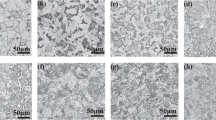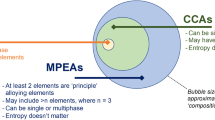Abstract
IT is generally accepted that if cast iron and copper are coupled together in a brine solution, the iron, being the less noble member, is likely to suffer corrosion. The copper, on the other hand, will be made ‘more negative’ by contact with the iron and will be prevented in greater or less degree from corroding. The classical work on this subject was that of Sir Humphry Davy, and is well known to electro-chemists and to corrosion engineers.
This is a preview of subscription content, access via your institution
Access options
Subscribe to this journal
Receive 51 print issues and online access
$199.00 per year
only $3.90 per issue
Buy this article
- Purchase on Springer Link
- Instant access to full article PDF
Prices may be subject to local taxes which are calculated during checkout
Similar content being viewed by others
Author information
Authors and Affiliations
Rights and permissions
About this article
Cite this article
HIGGINS, W. Electrolytic Corrosion of Iron and Copper. Nature 173, 994–995 (1954). https://doi.org/10.1038/173994b0
Issue Date:
DOI: https://doi.org/10.1038/173994b0
Comments
By submitting a comment you agree to abide by our Terms and Community Guidelines. If you find something abusive or that does not comply with our terms or guidelines please flag it as inappropriate.



